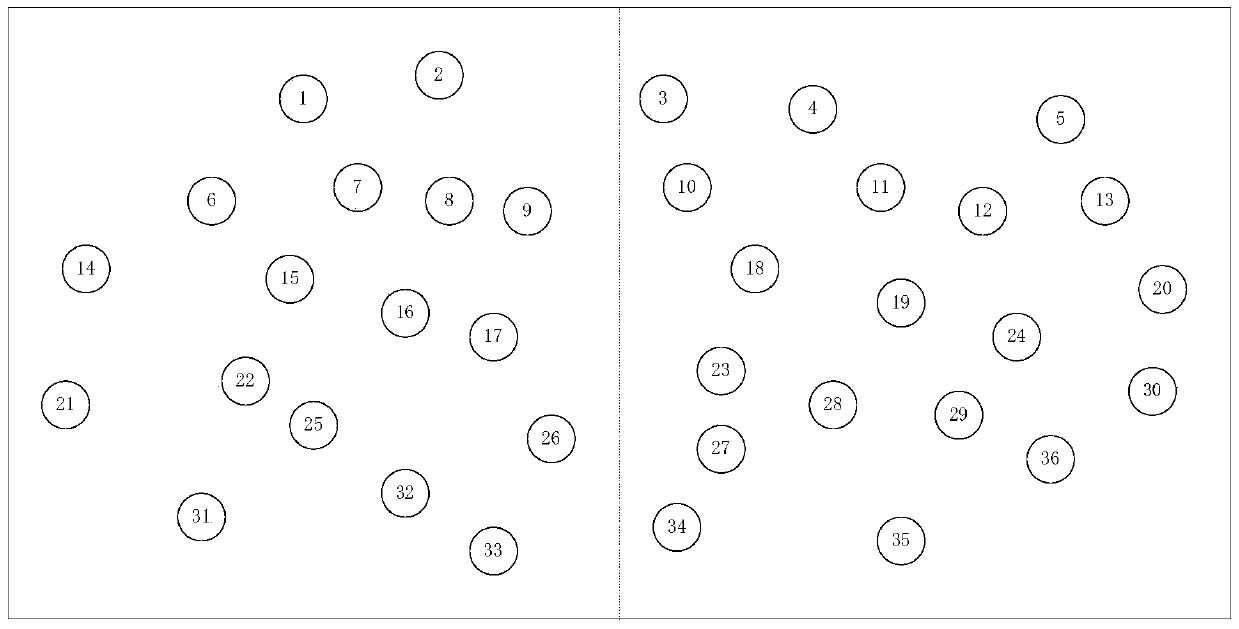A Clustering Method for Wireless Sensor Networks Based on Sink Trust Evaluation Value
A wireless sensor and evaluation value technology, applied in the clustering field of wireless sensor networks, can solve the problems of insufficient control refinement, affecting network communication, interrupting communication, etc., and achieves simple protocol operation, uniform energy consumption distribution, and uniform distribution of cluster heads Effect
- Summary
- Abstract
- Description
- Claims
- Application Information
AI Technical Summary
Problems solved by technology
Method used
Image
Examples
Embodiment Construction
[0063] The present invention will be further described below in conjunction with accompanying drawing:
[0064] refer to figure 1 , the usage scenario of the present invention is:
[0065] In this scene, there are 36 undifferentiated ordinary nodes and a sink node, and all ordinary nodes except the sink node carry the same initial energy. 36 ordinary nodes are randomly distributed in the rectangular area drawn by the solid line, and the Sink node is located in the center of the area. figure 1 The middle gray circle represents the Sink node, figure 1 A white circle with a label in represents a normal node.
[0066] refer to figure 2 , the present invention aims at figure 1 The implementation steps of wireless sensor network clustering in the scenario are as follows:
[0067] Step 1, create an initialization cluster.
[0068] (1a) Initialize the trust evaluation value record stored by the Sink node, that is, Figure 4 TR, N, T in are initialized to 0.5, 0, 0 respectivel...
PUM
 Login to View More
Login to View More Abstract
Description
Claims
Application Information
 Login to View More
Login to View More - R&D
- Intellectual Property
- Life Sciences
- Materials
- Tech Scout
- Unparalleled Data Quality
- Higher Quality Content
- 60% Fewer Hallucinations
Browse by: Latest US Patents, China's latest patents, Technical Efficacy Thesaurus, Application Domain, Technology Topic, Popular Technical Reports.
© 2025 PatSnap. All rights reserved.Legal|Privacy policy|Modern Slavery Act Transparency Statement|Sitemap|About US| Contact US: help@patsnap.com



